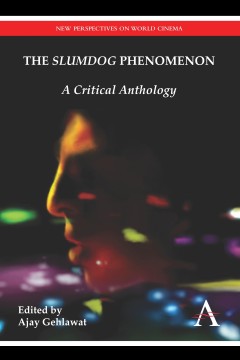The “Slumdog” Phenomenon
A Critical Anthology
Edited by Ajay Gehlawat
- About This Book
- Reviews
- Author Information
- Series
- Table of Contents
- Links
- Podcasts
About This Book
Winner of numerous awards and the epicenter of multiple controversies, Danny Boyle’s 2008 film “Slumdog Millionaire” has fueled a series of debates regarding its depictions of India and the slum, its references to Bollywood, its global circulation and success, and its reception by critics and audiences. “The ‘Slumdog’ Phenomenon” is an edited collection that seeks to address all of these topics and, in the process, provide new and innovative ways of looking at this controversial film. Each of the book’s four sections considers a particular aspect of the film – such as its relation to the nation, to the slum and to Bollywood – along with its reception and theorization.
Collecting, for the first time ever, a wide range of critical essays exploring this film from a rich variety of disciplinary perspectives, “The Slumdog Phenomenon” will be of interest to readers across the academic spectrum. Rather than offering a book-length study of the film from one point of view, this collection presents a variety of shorter pieces that consider “Slumdog Millionaire” from several different angles. Featuring a dynamic combination of landmark essays by leading critics and theorists, as well as newer pieces by emerging scholars, this collection will provide readers with an assortment of critical perspectives on a film that continues to generate fascination, curiosity and controversy around the world.
Reviews
‘[A]ddresses a wide variety of issues that would be of interest not only to those studying [this film] in particular, but also to those investigating questions of national cinemas in globalized production and distribution circuits, cultural mediations and representations of the Other, and borrowings and adaptations across different cinematic histories and styles.’ —Usha Iyer, ‘Studies in South Asian Film & Media’
“From national allegory, Bollywood, the slum, to the internet – this book comprises bold and exciting essays that explore the phenomenon of ‘Slumdog Millionaire’ in terms of its varied pleasures and contradictions. Ranging from the scholarly to the witty, this book is an engaging read.” —Rajinder Dudrah, Director of the Centre for Screen Studies, University of Manchester
Author Information
Ajay Gehlawat is assistant professor of theatre and film in the Hutchins School of Liberal Studies at Sonoma State University.
Series
Anthem Film and Culture
Anthem South Asian Studies
Table of Contents
Notes on Contributors; List of Figures; Acknowledgments; Introduction: The “Slumdog” Phenomenon – Ajay Gehlawat; “SLUMDOG” AND THE NATION: Chapter 1: National Allegory – Brian Larkin; Chapter 2: “Slumdog Millionaire” and the Emerging Centrality of India – Sharmila Mukherjee; Chapter 3: Slumlord Aesthetics and the Question of Indian Poverty – Nandini Chandra; Chapter 4: Watching Time: “Slumdog Millionaire” and National Ontology – Lakshmi Padmanabhan; “SLUMDOG” AND THE SLUM: Chapter 5: “Slumdog Millionaire” and Epistemologies of the City – Ulka Anjaria and Jonathan Shapiro Anjaria; Chapter 6: A Million Dollar Exit from the Slum-World: “Slumdog Millionaire”’s Troubling Formula for Social Justice – Mitu Sengupta; Chapter 7: Slumdogs and Millionaires: Facts and Fictions of Indian (Under)development – Snehal Shingavi; “SLUMDOG” AND BOLLYWOOD: Chapter 8: Slumdogs, Coolies and Gangsters: Amitabh Bachchan and the Legacy of 1970s Bollywood in “Slumdog Millionaire” – Claus Tieber; Chapter 9: “It is Written” (in Invisible Ink): “Slumdog Millionaire”’s SFX and the Realist Overwriting of Bollywood Spectacle – Samhita Sunya; “SLUMDOG”’S RECEPTIONS: Chapter 10: Why the Sun Shines on “Slumdog” – Anandam Kavoori; Chapter 11: “Slumdog” Celebrities – Priya Jaikumar; Chapter 12: “Slumdog Millionaire” and the New Middlebrow – Robert Koehler; Chapter 13: Slumdog Comprador: Coming to Terms with the “Slumdog” Phenomenon – Ajay Gehlawat; Chapter 14: The Life-Cycle of “Slumdog Millionaire” on the Web – Thomas Elsaesser and Warren Buckland; Conclusion: Jai Who? – Ajay Gehlawat; Select Bibliography; Films Cited; Index
Links
Stay Updated
Information
Latest Tweets



